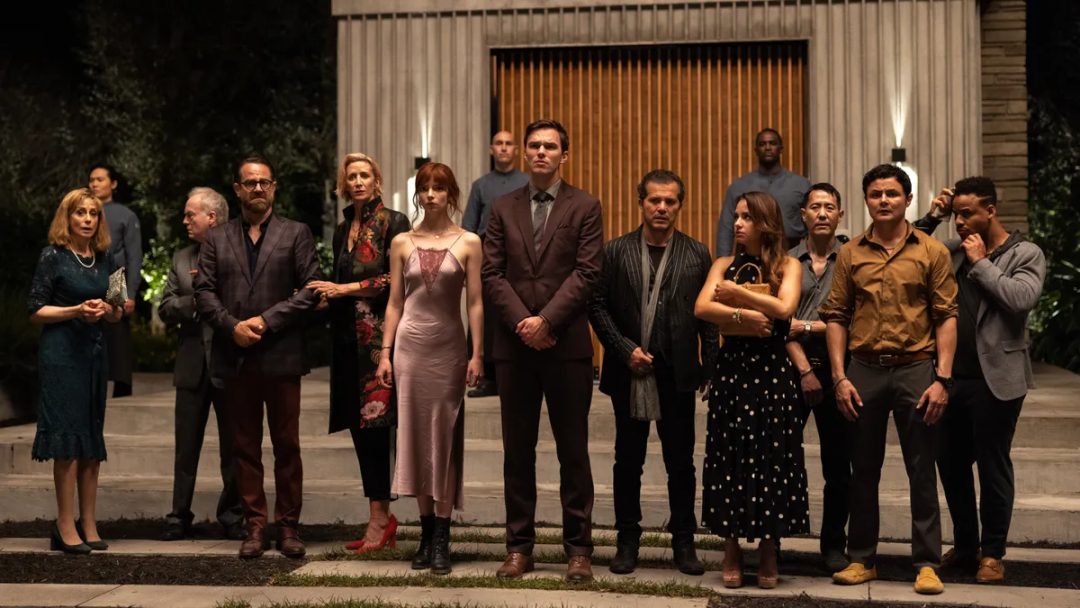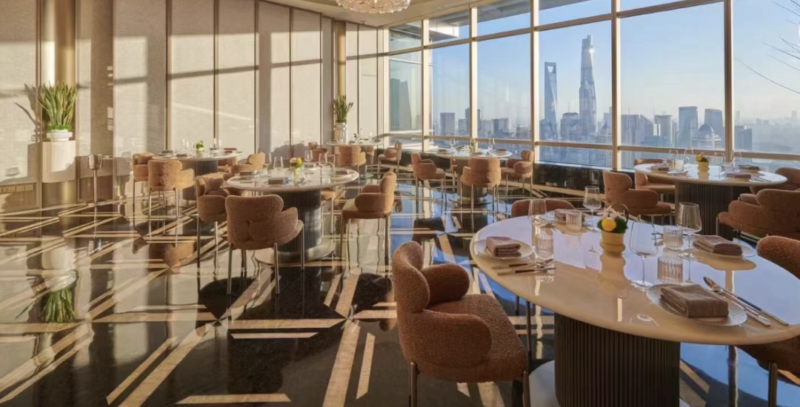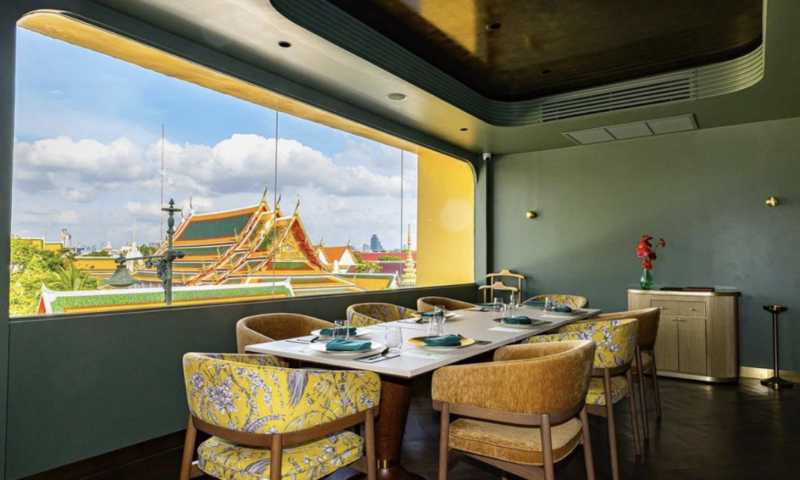People’s growing wealth has pushed the food industry forward, especially the high-end dining world. Directed by Mark Mylod and starring Anya Taylor-Joy and Nicholas Hoult, the recently released dark comedy thriller The Menu is a satire on the absurdity of classism. It follows a famous chef and his restaurant guests, including the wealthy, the celebrity, the food critic and the foodie blogger, for a deadly experience they are not expecting. Apart from the film’s apparent themes, what’s more worth examining is perhaps the mechanism behind the pretentious side of ultra-fine dining.
@GQ Taiwan_YouTube
The film opens with food blogger Tyler Ledford (Nicholas Hoult) and his date Margot Mills (Anya Taylor-Joy) taking a ferry to a secluded island where the fancy restaurant Hawthorne (only caters 12 guests at a time) run by celebrity chef Julian Slowik (Ralph Fiennes) is located. Also on board there is a prestigious food critic with her obsequious editor; a wealthy older man and his wife; a once-popular actor and his beleaguered assistant; three obnoxious, entitled tech dudes; and Chef Slowik’s alcoholic mother. In an interview with Vanity Fair, director Mark Mylod said, “I love flawed characters and I love trying to understand them, to find the context of their behaviour and where possible to peel that back and find that innocence, find that vulnerability to have empathy for them.”
@Rotten Tomatoes
As the specifically tailored dishes take on a sinister and violent tone, the film ends with Chef Slowik and his staff burning down Hawthorne with all the guests — save for Margot who is not on the invitation list — still inside. The film was shot within the restaurant for most of the scenes, reportedly over two and a half months. It is both a locked-room mystery and a well-designed gourmet film. Director Mylod invited Michelin three-star chefs Dominique Crenn and John Benhase to guide the staff through the kitchen action, and also asked the cast to watch through Chef’s Table series. The cuisine, cooking and service in the film are all very precise and professional.
@dominiquecrenn_instagram
The setting of the film is highly authentic. For example, Hawthorne serves Scandinavian cuisine, so the interior design resembles the Michelin two-starred restaurant Koks once on the Faroe Islands in Denmark and recently relocated to Greenland. Special rituals of Michelin restaurants are also preserved, such as a visit to the oyster harvesting, a trip to the farm and the meat-aging room, which are indeed observed at the three-starred Noma in Copenhagen and the closed two-starred Fäviken in Sweden. I have visited most of these restaurants in the past few years, so I could instantly relate when I saw those scenes.
@Koks official website
Chef Magnus Nilsson and Author
The film satirizes a very specific kind of elitism of the chaotic gourmet food world. The wealthy couple are frequent diners at Hawthorne but can’t recall specific dishes. They dine here simply “because we can”. The trio of tech businessmen treat dinner at Hawthorne as a sign of status. Food critic Lillian wields considerable power, but her personal tastes and whims have decided the life and death of many restaurants. She is accompanied by her sycophantic editor. There is a taco dish that has images of shady history of each of the guests at the restaurant, and Lillian is given a list of names of all the restaurants that have closed because of her arbitrary critique.
Of the 12 guests, Margot may be the least pretentious. When the humorous Breadless Bread Plate is served, guests are only given savoury oils and emulsions with no bread, because bread is for the common people, which the Chef denies his guests because they are all obscenely rich. I had a similar experience when I visited Mugaritz, a two-starred restaurant in Basque, Spain. There the staff asked diners to taste the sauce without providing any cutlery, and this implies having to lick the plate in order to be able to eat. I felt we were challenged and had to compromise under the authority of the restaurant, not out of trust. Before Gaggan in Bangkok closed, there was a “Lick it Up” dish, which also invites diners to lick directly off the plate as a fun way of eating. But I still could not do it.
The three tech partners have ties to the restaurant’s main investor, who is thrown into the sea and drowned. Crucially, this reflects the sad status quo that many chefs have become a puppet to those who fund their endeavours. Other allusions in the film include: Chef Slowik has made multiple sexual advances towards a female chef in his kitchen during their time working together, implying the recent allegations of misconduct in some commercial kitchens in the UK.
Later in the film, Chef Slowik forces Tyler to cook him a meal to prove his strengths and it doesn’t go well at all. To think the real world, there are foodies like Tyler who are blind fanatics of their idols and don’t even know how to cook the basics. If they can truly appreciate the effort behind such painstaking creations is questionable.
The film uses collective emotion to heighten the sense of fear. Towards the end of the film, the male guests are given the opportunity to run away, but are later caught one by one, with the last person caught being awarded an Arpège egg (a famous egg dish invented by three-starred French chef Alain Passard) as a prize (I laughed out loud in the cinema at this point). There are close-ups of the advanced kitchenware used in the fight between Margot and Elsa (the headwaiter) for satire as well.
Michelin star chef Tom Kitchin accused of physically abusing and humiliating staff @scotsman
@passard egg_noseychef
Class anxiety is an unavoidable reality in the food world. Restaurant event organisers tend to invite those who have newspaper columns, voting rights and large Instagram followers. Mainstream press like the New York Times have a huge saying in the business development of restaurants and chefs’ careers. It’s no wonder that Tyler admires real food critics.
The film is said to have been inspired by screenwriter Will Tracy’s experience of dining at Cornelius Sjømatrestaurant in Norway, exploring themes like class, privilege of the wealthy, darker side of power and greed that plague the fine dining industry. But I think it lacks development in plot and some characters. Chef Slowik’s personality is altered because of his own childhood trauma but that part of the story is not thoroughly touched upon. The mass killing is absolutely horrifying but are the guests so evil that they all deserve to die? For example, Slowik punishes George (the actor) because he didn’t like George’s movie. And would it be too dramatic that all the staff is willing to commit suicide at a single clap of Slowik?
@hanne cathrin olsen_visitbergen
Chef Slowik’s last piece of artwork, also the final dessert, is made from marshmallows, chocolate, graham crackers, customers, staff, and the restaurant. Overlooking the restaurant floor, I saw a finale inspired in part by Alinea’s famous tabletop dessert. Finally, the restaurant, the entire staff and Chef himself all go up in flame as his loyal cooks behind him respond in unison to his exact command with a spirited “Yes, Chef!”.
Margot is the only one who made it out, for daring to challenge the Chef and probably being the smartest person in the room all night. She sits on the deck of the boat, savouring the remainder of the $10 takeaway cheeseburger Slowik made for her, and watching the blaze erupting the island.
Alinea Dessert@alinearestaurant
@ERIC ZACHANOWICH_vanityfair
@uproxx
I believe chefs would cast a knowing smile seeing the film. But there is certainly more to peel back. Food critics may want to become more aware of the importance of their jobs and stop being pretentious. The Menu is a seemingly absurd satire, but the themes it tries to explore are very realistic. Generally, it is a dark comedy, but the thriller elements far outweigh the entertainment. Perhaps with more dark humour, it might have been more like a completed dish.
It was a weekday afternoon. An elderly gentleman and I were the only persons in the large cinema. When the film was over, I couldn’t help but ask him if he works in the restaurant industry. He said he was a restaurant investor. I thought about the “angel investor” in the film who is forced to wear a pair of wings and thrown into the sea.
It seems restaurant investor is no longer a safe career anymore!
-END-
Author: Jocelyn 华姐
Photo/Pictures: 餐厅官网/youtube/instagram/Jocelyn 华姐











